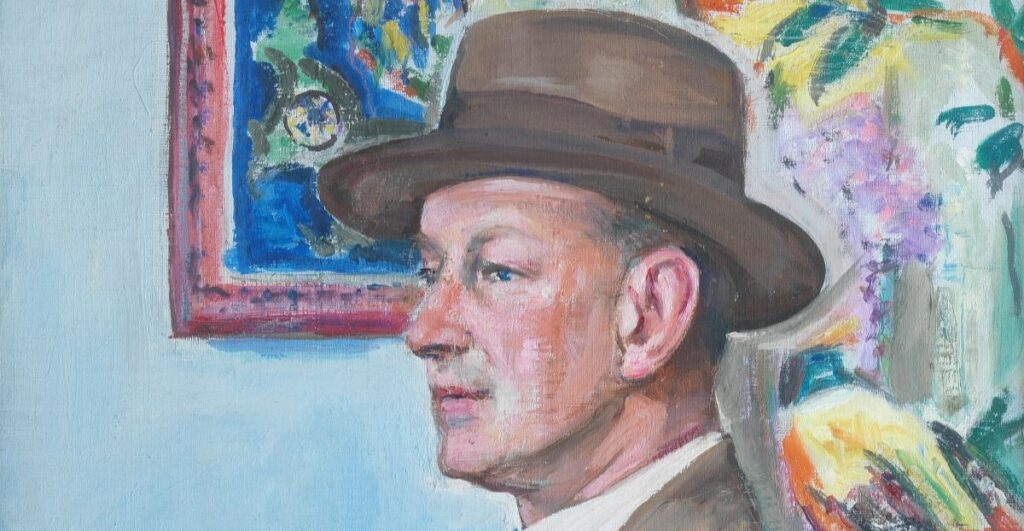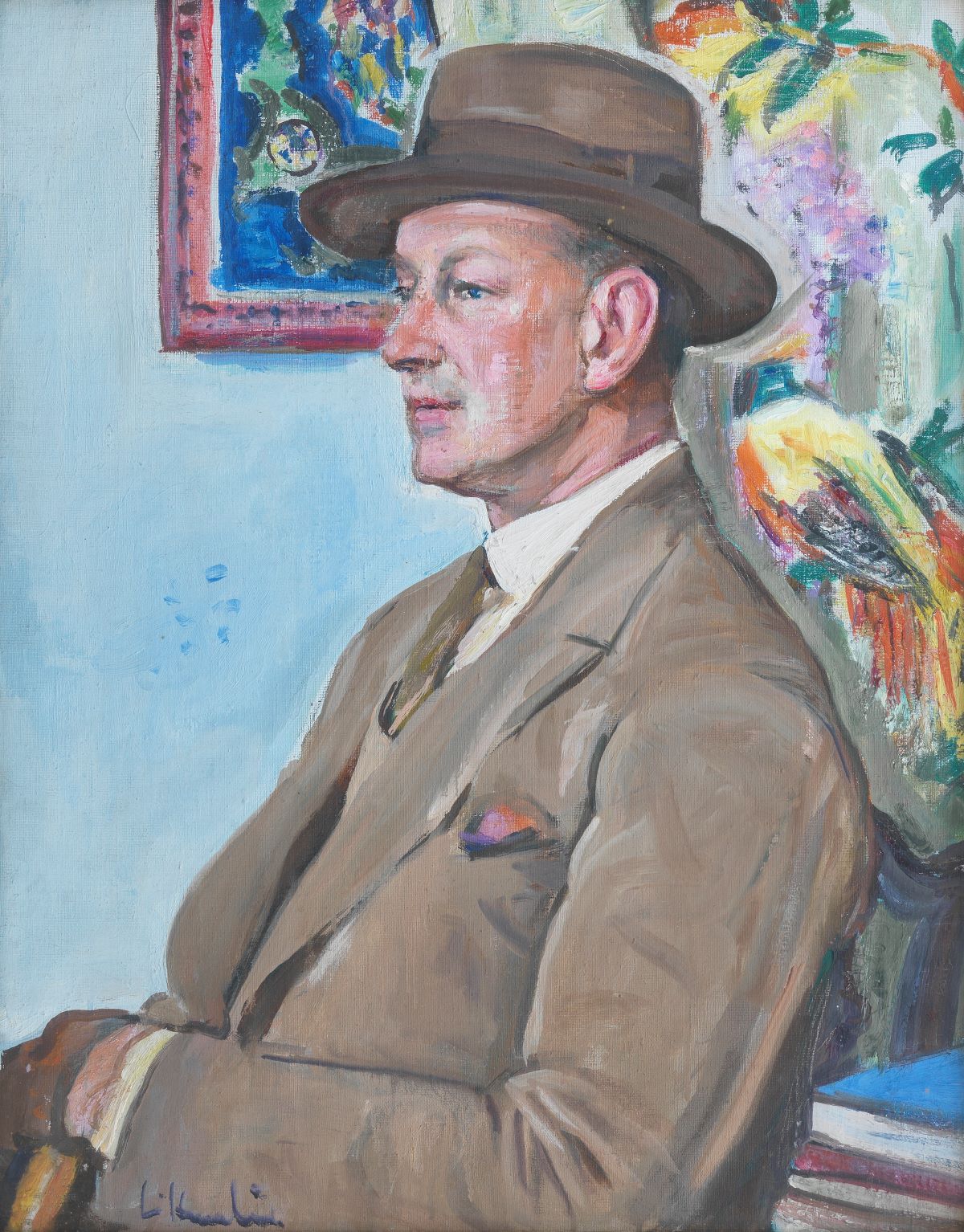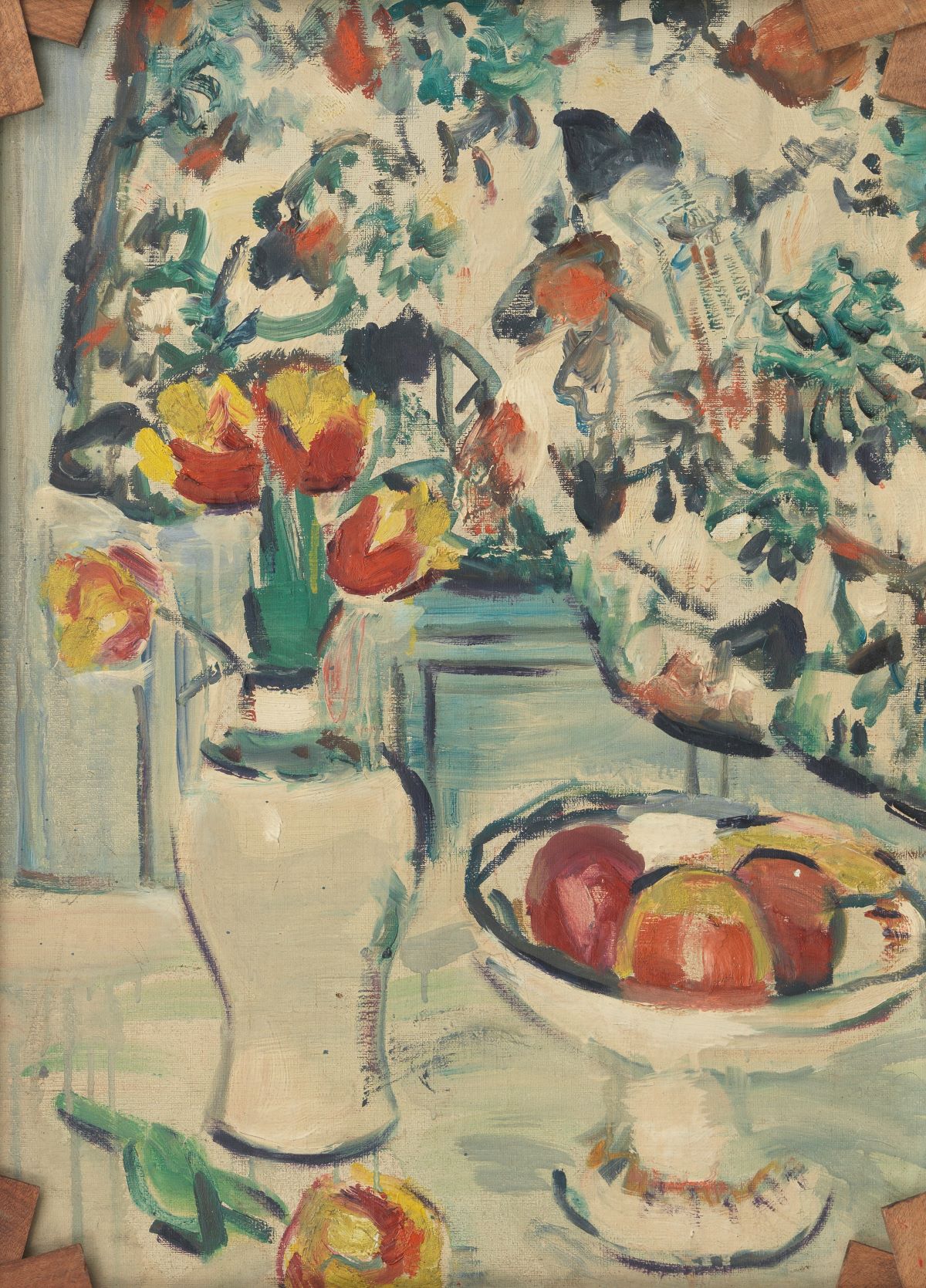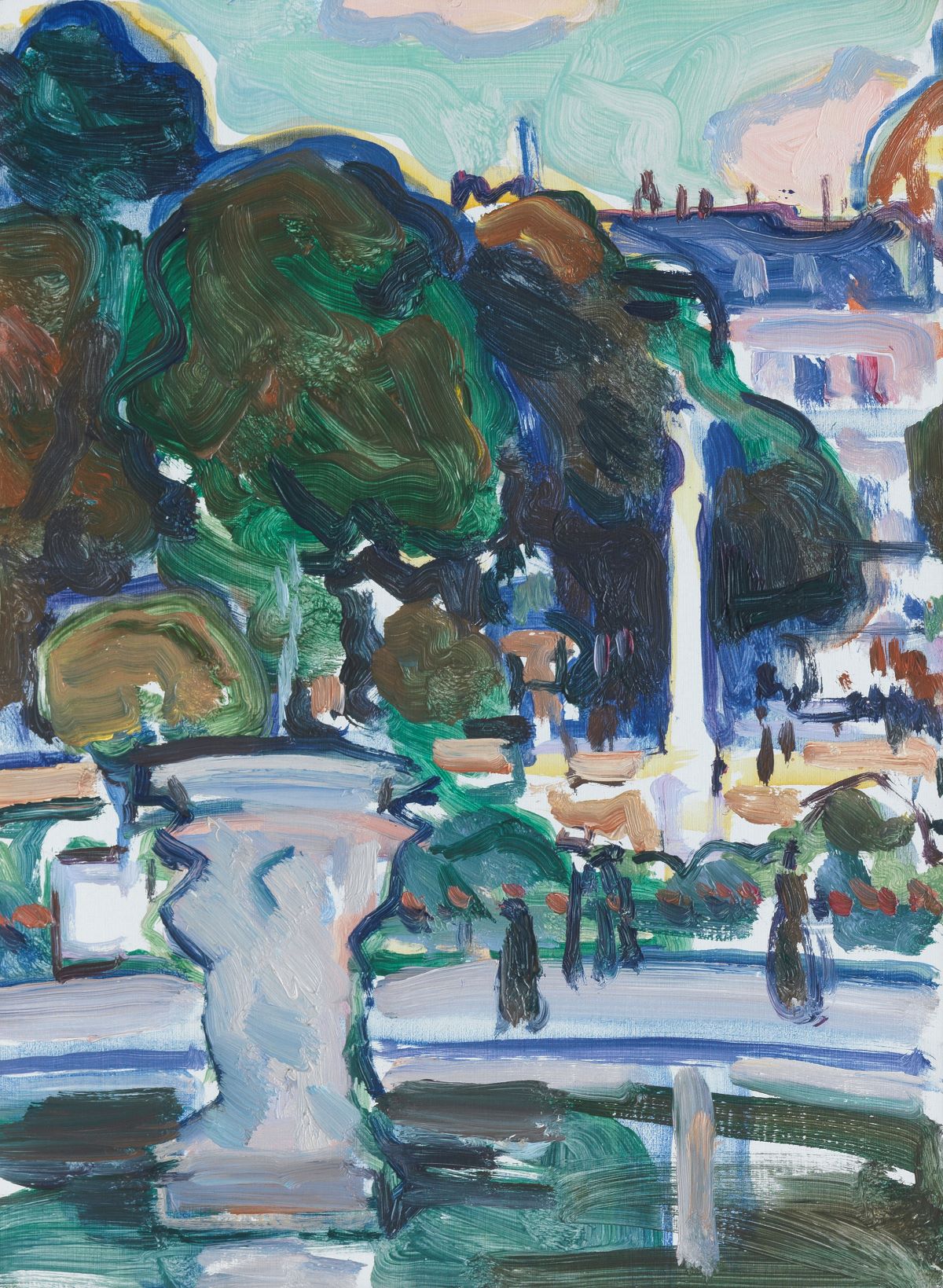
Hidden still life discovered on reverse of portrait painting by Scottish colourist George Leslie Hunter
A hidden still life discovered on the reverse of a portrait painting by Scottish colourist George Leslie Hunter is going under the hammer for the first time.
Portrait of John Ressich, by Hunter, has been held in a private collection for generations. The still life on the back of the painting was only discovered when the owners took it off the wall to take pictures of it for valuation.
They noticed a small tear in the backing paper which gave a glimpse of vibrant colour revealing the still life.

Portrait of John Ressich, by George Leslie Hunter.

The still life on the reverse of the portrait.
The portrait with the still life on its reverse could fetch £18,000 when it goes on sale at Bonhams auction.
Also up for auction is an exceptional work by Samuel John Peploe titled Luxembourg Gardens, Paris which could sell for £100,000.
‘We are delighted to have these works returning to Edinburgh,’ said May Matthews, managing director of Bonhams Scotland.
‘The Scottish Colourists are among Scotland’s most cherished artists and breathed new life into Scottish painting. The sale has some exquisite works by all four artists and the discovery of a hidden still life by Hunter is all the more remarkable.
‘We expect considerable interest.
‘The John Ressich portrait by Hunter had been passed down through the sitter’s family and has never been on the market before.
‘The owners inherited it in the 1980s and only discovered the painting on the reverse when taking the picture off the wall to send photographs to us at Bonhams for an initial valuation.
They spotted a small tear in the backing paper, and this provided a tantalising glimpse of colour from the still life. I was lucky enough to be the one to carefully remove the paper.
‘You can imagine my absolute delight on discovering the tulip still life on the reverse in all its vibrant colour. It was a very special moment and hugely exciting too.’

Samuel John Peploe RSA (1871-1935) Luxembourg Gardens, Paris.
Two rare early portraits will also feature in the sale including a Portrait of Catherine Maxwell by the Scottish painter George Willison offered an estimate of £4,000-6,000.
Catherine married John Fordyce of Ayton in 1767 and following the marriage of Catherine’s younger sister to the 4 th Duke of Gordon, the Fordyces found themselves a central part of Scottish high society.
Several traditional reels were composed in Catherine’s honour, such as Mrs Fordyce of Ayton’s strathspey, Miss Catherine Maxwell’s Scots Measure and Miss Catherine Maxwell’s Minuet.
The second portrait by Jacob Jacobsz.de Wet the Younger (Haarlem 1641-1697) is of Lady Anne Bruce (1660-1716), daughter of the 2 nd Earl of Elgin, Robert Bruce and offered with an estimate of £3,000-5,000.
The painting hung for some time at Edinburgh Castle. During the 1650s, Sir William Bruce of Kinross, 1 st Baronet, King’s Surveyor and Master of Works in Scotland resided in Rotterdam, and it is here that he made acquaintance with Jacob Jacobsz.de Wet the Younger.
Following Bruce’s introduction of the artist to King Charles II, de Wet the Younger contributed to the renovation of Holyroodhouse and would go on to paint smaller works for Kellie Castle and Balcaskie House in Fife.
Read more on Scottish Field’s News pages.
Plus, don’t miss the October issue of Scottish Field magazine.
TAGS

